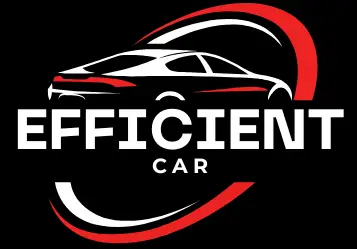Future of Efficient Cars

The Evolution of Automobile Efficiency: From Past to Present
The evolution of automobile efficiency has been a remarkable journey, spanning over a century. In the early years, when internal combustion engines were first introduced, efficiency was not a priority. The focus was primarily on making the vehicles functional and accessible to a wider population. As a result, efficiency took a backseat, and cars consumed more fuel than necessary.
However, as technology advanced and environmental concerns came to the forefront, the automotive industry began to prioritize efficiency. Fuel injection systems, introduced in the mid-20th century, significantly improved efficiency by providing precise control over fuel delivery. This innovation allowed engines to burn fuel more efficiently, reducing wastage and increasing mileage. Additionally, advancements in aerodynamics contributed to improved efficiency, as automakers started incorporating sleeker designs that minimized air resistance.
Over the years, the evolution of automobile efficiency also saw a shift towards hybrid vehicles. While hybrid technology may seem relatively new, the concept was actually first explored in the late 19th century. However, it wasn't until the turn of the 21st century that hybrid vehicles became commercially viable and gained popularity. By combining an internal combustion engine with electric power, hybrids offered the best of both worlds - reduced fuel consumption and lower emissions. These early innovations laid the groundwork for the efficient vehicles we see on the roads today, constantly pushing the boundaries of what is possible in terms of fuel economy and environmental sustainability.
Innovative Technologies Shaping the Future of Fuel Efficiency
One of the most promising innovative technologies that is shaping the future of fuel efficiency is the development of advanced hybrid powertrain systems. These systems combine the use of traditional internal combustion engines with electric motors, allowing for increased fuel efficiency and reduced emissions. This technology has already gained significant traction in the automotive industry, with hybrid vehicles becoming increasingly popular among consumers.
Another innovative technology that holds great potential for improving fuel efficiency is the use of regenerative braking systems. Traditionally, when a vehicle brakes, the kinetic energy is lost as heat. However, regenerative braking systems capture this energy and convert it into electrical energy, which can be used to power the vehicle. This not only reduces the reliance on the internal combustion engine but also enhances fuel efficiency by reusing energy that would otherwise go to waste. As more research and development is poured into this technology, we can expect to see even greater advancements in fuel efficiency in the future.
The Impact of Electric Vehicles on the Automotive Industry
Electric vehicles (EVs) have rapidly made their mark on the automotive industry, revolutionizing the way we think about transportation. With zero tailpipe emissions and a reduced reliance on fossil fuels, EVs have become a viable solution to mitigating the environmental impact of traditional gasoline-powered vehicles. As a result, governments, consumers, and automakers alike have shown increased interest in the development and adoption of electric vehicles.
One of the key impacts of electric vehicles on the automotive industry is the shift towards sustainable and renewable energy sources. The integration of EVs has prompted the need for more efficient charging infrastructure that relies on renewable energy generation. This transition has not only spurred growth in the renewable energy sector but has also paved the way for a more sustainable future, as EVs can be charged using solar panels, wind turbines, and other forms of clean energy. Moreover, the rise of EVs has also led to increased research and development in battery technology, driving advancements in energy storage solutions that can be used across various industries beyond just the automotive sector.
Breaking Barriers: Overcoming Challenges in the Development of Efficient Cars
Developing efficient cars is no easy feat, as automakers face numerous challenges along the way. One major obstacle is the need to strike a balance between fuel efficiency and performance. Improving fuel efficiency often requires sacrificing power, leaving car manufacturers to face the dilemma of creating vehicles that are both economical and compelling to drive. Additionally, there is the challenge of meeting stringent emissions standards set by regulatory bodies around the world. This necessitates the implementation of advanced technologies and innovative systems to minimize the environmental impact of vehicles while maximizing their efficiency.
Another significant challenge lies in the availability and accessibility of infrastructure to support efficient cars. With the rise of electric vehicles (EVs) and other alternative fuel vehicles, the charging or refueling infrastructure needs to be widespread and convenient enough to encourage adoption. Without a robust network of charging stations or hydrogen refueling stations, consumers may be hesitant to invest in these vehicles, fearing the limitations in long-distance travel or the inconvenience of finding a charging or refueling point. Overcoming these infrastructure challenges will require collaboration among governments, automakers, and energy providers to ensure the widespread availability of charging options and renewable energy sources to power efficient cars.
The Role of Renewable Energy in Powering Efficient Vehicles
With the increasing demand for sustainable transportation, the role of renewable energy in powering efficient vehicles is becoming increasingly significant. Renewable energy sources, such as solar power and wind power, offer a promising solution to reduce the carbon footprint of transportation and enhance overall energy efficiency. Electric vehicles (EVs), in particular, are at the forefront of this revolution, as they can draw energy directly from renewable sources.
The integration of renewable energy into the charging infrastructure for EVs is a critical step towards their widespread adoption. By utilizing solar power or wind power to charge electric vehicle batteries, the dependence on non-renewable energy sources can be reduced significantly. In this way, the environmental impact of EVs is further minimized, as they effectively operate on clean, renewable energy. Moreover, by tapping into renewable energy sources, the development of more efficient electric vehicles is reinforced, leading to longer driving ranges and faster charging times. As renewable energy technologies continue to evolve and become more accessible, the potential for powering efficient vehicles with clean energy becomes increasingly promising.
Advancements in Lightweight Materials for Enhanced Fuel Efficiency
In the pursuit of enhancing fuel efficiency, one area of focus for automotive manufacturers has been the development and application of lightweight materials. By utilizing materials that are lighter in weight, vehicles can reduce their overall mass, which in turn requires less energy to move and therefore improves fuel efficiency. This has led to the emergence of innovative materials such as carbon fiber composites and aluminum alloys, which have revolutionized the automotive industry.
Carbon fiber composites, for instance, offer exceptional strength and rigidity while being significantly lighter than traditional materials such as steel. This allows for the creation of lighter vehicle components, such as body panels and structural elements, without compromising safety or performance. Similarly, aluminum alloys possess excellent strength-to-weight ratios, making them an ideal choice for various vehicle parts like engine blocks, suspension components, and wheels. As a result, vehicles made with these lightweight materials experience reduced energy consumption, improved acceleration, and enhanced overall efficiency on the road. These advancements in lightweight materials not only contribute to making vehicles more fuel-efficient but also pave the way for the design of environmentally friendly cars that align with the growing demand for sustainable transportation solutions.
